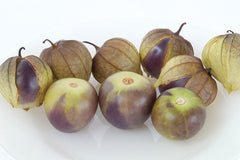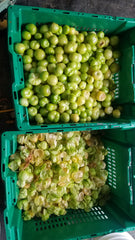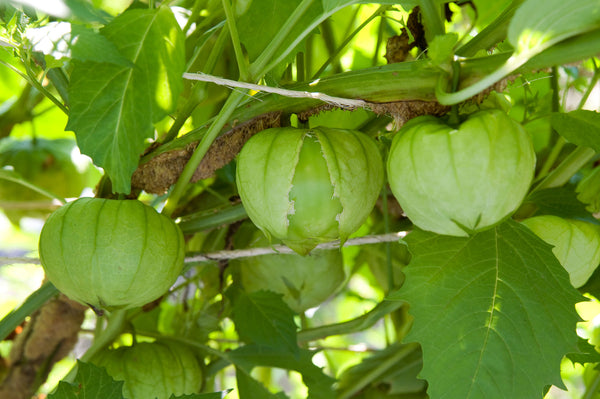Toma Verde
Physalis philadelphicaDays from maturity calculated from the date of seeding. Average 18,500 seeds per ounce. Federal germination standard: 50%. Usual seed life: 4–6 years. Isolation distance for seed saving: 800 feet to 1/2 mile.
Planting Depth 1/4”
Soil Temp. Germ. 70-85˚F
Days to Germ. 6-14
Plant Spacing 2–3’
Row Spacing 4–6’
Days To Maturity 60
Full Sun, Moist Well Drained
Toma Verde Seed Count
1 Ounce ≈ 18,900 seeds
- 30 Seeds$4.10
- 300 Seeds$15.50
- 1 Ounce$58.00
T...
The wild tomatillo and related plants are found everywhere in the Americas except in the far north, with the highest diversity in Mexico. In 2017, scientists reported on their discovery and analysis of a fossil tomatillo found in the Patagonian region of Argentina, dated to 52 million years B.P. The finding has pushed back the earliest appearance of the Solanaceae plant family of which the tomatillos are one genus. Tomatillos were domesticated in Mexico before the coming of Europeans, and played an important part in the culture of the Maya and the Aztecs, more important than the tomato. The specific name philadelphica dates from the 18th century. Delicious tomatillo recipes.
Companions: basil, mint, chives, sage, parsley, garlic
Inhibitors: Potatoes, eggplant, and corn all attract insects that will also eat tomatillos.



